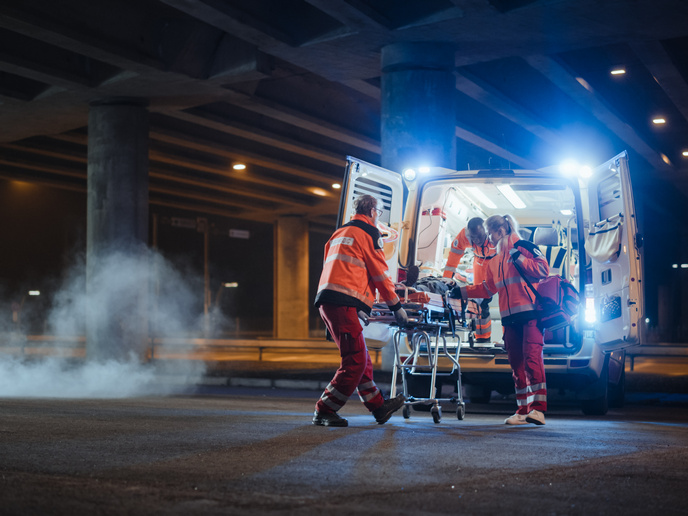Toolkit for smarter, more timely emergency care during mass casualty incidents
Over the years we have witnessed an increase in disaster frequency around the world due to climate change, migration crises, pandemics as well as civilian casualties and terrorist attacks. These disasters are also becoming more complex and unpredictable, sometimes leading to mass casualty incidents (MCI). Improved preparedness and management are sorely needed, from emergency medical services (EMS) to coordinated facilities for life-saving triage and care.
A smart toolkit for the field
The EU-funded NIGHTINGALE(opens in new window) project set out to radically improve pre-hospital emergency responses using advanced, integrated technology. The key objective was to design a set of tools to support EMS in MCI, making Europe better prepared to respond swiftly, accurately and collaboratively. The toolkit, described in the Journal of Medical Internet Research(opens in new window), integrates a combination of devices, applications and services. It brings together real-time triage technology, AI tools, interoperability frameworks and multi-agency coordination platforms. “NIGHTINGALE is delivering novel, affordable tools tailored to the needs of first responders an innovative suite of medical response tools that are not only novel and affordable but also customised to the operational needs of first responders,” explains project coordinator Angelos Amditis who is research and development director at the Institute of Communication and Computer Systems(opens in new window), Greece. The training material(opens in new window) of the toolkit supports rapid victim identification and assessment through digital triage tags, augmented reality glasses, wearables, and even earplug sensors. A mobile app and triage dashboard allow responders to visualise vital signs instantly and in real time. The toolkit integrates powerful AI components to improve situational awareness, optimize resources, and support patient prognosis and decision-making. Unmanned aerial vehicles and mobile systems enable rapid scanning and remote detection of vital signs, providing critical insights even before responders arrive.
Co-designed by users for users
The NIGHTINGALE team involved a wide range of stakeholders throughout the design and testing phases including EMS and non-medical civil protection agencies from 11 EU member states and associated countries. This collaborative approach ensured the tools directly addressed real-world challenges. The system was validated through extensive lab testing and full-scale deployment trials simulating major crises “By incorporating continuous user input and validation, we made sure NIGHTINGALE adapts to diverse emergency contexts, even under extreme conditions like network loss or power outages,” highlights Amditis. The NIGHTINGALE toolkit was designed to bring together disconnected emergency systems and integrate into existing EMS systems. It incorporates advanced data fusion and XML messaging to facilitate communication across different authorities. A central interoperable data lake collects, stores and analyses information from the field. It also includes a scenario builder, the SWAPP App, a next generation public safety answering point, and a social media service to enhance public communication and response coordination. Real-time collaboration is further enhanced through the command, control, coordination and incident management system (C3I/IMS), which works alongside other public nodes for faster and accurate emergency communication between responders and public.
Implementation across Europe
With development complete, NIGHTINGALE is now preparing for wide deployment. Plans include finalising business models, developing training programmes for EMS personnel, and supporting policy and standardisation initiatives at both national and EU levels. “We’re confident that the NIGHTINGALE toolkit will become a core component of next-generation EMS systems across Europe, helping to save lives and improve coordination when it matters most,” concludes Amditis.



